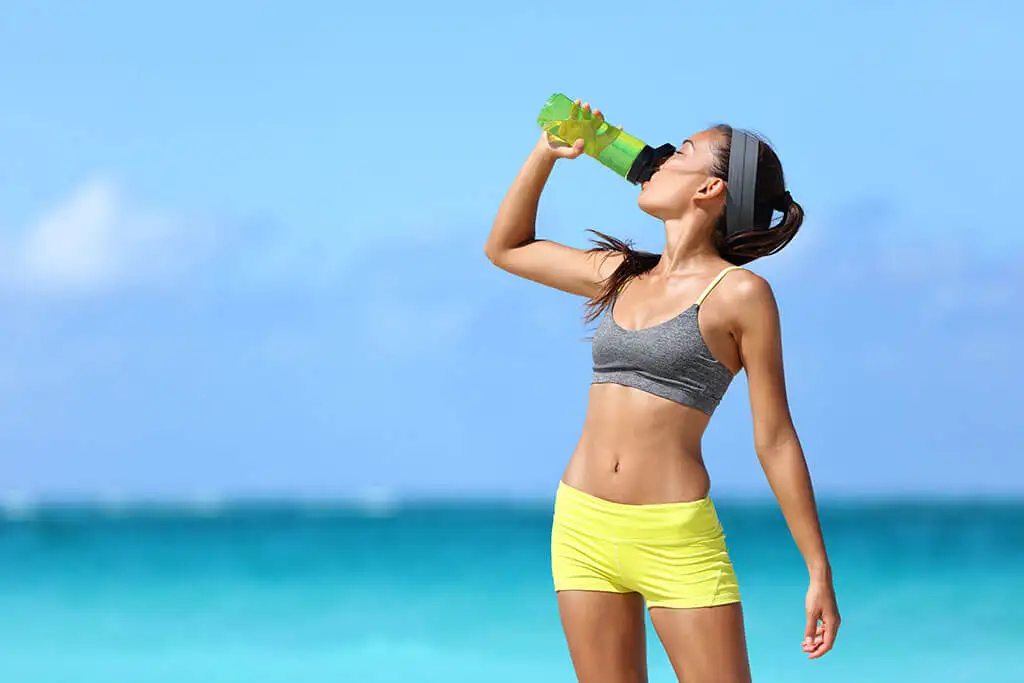Dry Fasting: What is it, How Does it Work, and What Are the Risks?


Written and verified by the nutritionist Saúl Sánchez Arias
Dry fasting is a practice that consists of withdrawing fluid intake. It has become fashionable in recent years due to the impact of social networks, despite the fact that it’s very dangerous.
Nutrition experts advise against this type of protocols that are based on water restriction, as they could cause great damage in the short and medium term. After all, most of the human body is made up of water.
Before we begin, it’s important to note that we must be careful with trends that are popularized in the media. Many of them have no scientific basis, so their practice could harm the body.
It’s always advisable to consult a professional before starting any type of restrictive approach.
How is dry fasting done?
According to the influencers, dry fasting is done by avoiding the intake of water as such and incorporating liquids in the diet from foods, such as fruit, vegetables and coconuts. They claim that this eliminates fluid retention, a fairly common problem in women.
However, science doesn’t support this claim. In fact, it’s always advisable to consume natural water daily in quantities of around 2 liters.
Proponents of the practice also claim that dry fasting can improve sports performance, as the body becomes accustomed to retaining more fluid inside and not losing it. A 2% loss of body water has been shown to negatively impact performance.
However, dry fasting is said to reduce the likelihood of this happening. But really, with a little search in the scientific literature, the hypothesis can already be discarded.
It’s clear that in the absence of water intake the body puts in place mechanisms to save fluids, but in no case these are associated with lower performance. On the contrary! In conditions of physical activity, sweating is necessary as a thermoregulatory element. If this is suspended, the water-electrolyte balance is affected, the body temperature increases and the risks are high.

We think you may be interested in reading this, too: What Are the Consequences of Not Eating for Several Hours?
Is dry fasting a good idea?
As you may have deduced, practicing dry fasting is totally inadvisable for your health. It’s a protocol that can be life-threatening, especially in summer periods and in older adults.
As the years go by, it’s more and more important to drink enough fluids. This is because the water balance is affected by aging.
In addition, drinking mineral water as such is not enough. If there’s sweating, mineral salts must be replenished to avoid hyponatremia.
According to a study published in the journal Frontiers of Hormone Research, hyponatremia is caused by a reduction in sodium concentration and can be fatal. Management is usually done at the hospital level, with symptoms that can sometimes resemble those generated by heat stroke.
This is why athletes often combine water with certain sports drinks containing electrolytes and carbohydrates. In this way, the onset of fatigue can be efficiently delayed. Fluid losses will be partially compensated and substrates will be provided for optimal performance.
Like this article? You may also like to read: The ProLon Diet: What Is It and What Are Its Benefits and Disadvantages?
The best hydration tool is water
Not only is it important to avoid dry fasting, but the main tool for maintaining a good state of hydration is mineral water. The consumption of soft drinks and juices has increased in recent years, which is very bad news. These products contain large amounts of simple sugars and artificial additives.
According to research published in the BMJ, regular intake of sugary drinks is linearly associated with the risk of suffering metabolic diseases, such as type 2 diabetes. The simple carbohydrates present in liquids soon reach the bloodstream, causing blood glucose levels to rise. Excessive compensatory work by the pancreas causes inefficiencies in its functioning.

Dry fasting is a bad alternative for health
Dry fasting has no scientific evidence or endorsement by nutrition experts. It’s considered a harmful protocol that should be avoided.
This is not the case with intermittent fasting, for example. The positive effects on the human body have been demonstrated in this case. However, in the case of any healthy diet, one of the premises is to ensure a good state of hydration on a constant basis.
Keep in mind that to achieve a good state of health over the years you have to flee from miracle products and fad diets. Focus on a way of life that’s based on healthy habits.
All cited sources were thoroughly reviewed by our team to ensure their quality, reliability, currency, and validity. The bibliography of this article was considered reliable and of academic or scientific accuracy.
- Maughan, R. J., & Shirreffs, S. M. (2010). Dehydration and rehydration in competative sport. Scandinavian journal of medicine & science in sports, 20 Suppl 3, 40–47. https://doi.org/10.1111/j.1600-0838.2010.01207.x
- Peri A. (2019). Morbidity and Mortality of Hyponatremia. Frontiers of hormone research, 52, 36–48. https://doi.org/10.1159/000493235
- Imamura, F., O’Connor, L., Ye, Z., Mursu, J., Hayashino, Y., Bhupathiraju, S. N., & Forouhi, N. G. (2015). Consumption of sugar sweetened beverages, artificially sweetened beverages, and fruit juice and incidence of type 2 diabetes: systematic review, meta-analysis, and estimation of population attributable fraction. BMJ (Clinical research ed.), 351, h3576. https://doi.org/10.1136/bmj.h3576
This text is provided for informational purposes only and does not replace consultation with a professional. If in doubt, consult your specialist.








